China's furniture industry embraces independent designer brands
Source:xinhuanet
The new generation of designers attaches more importance on the contemporary expression of Chinese elements.
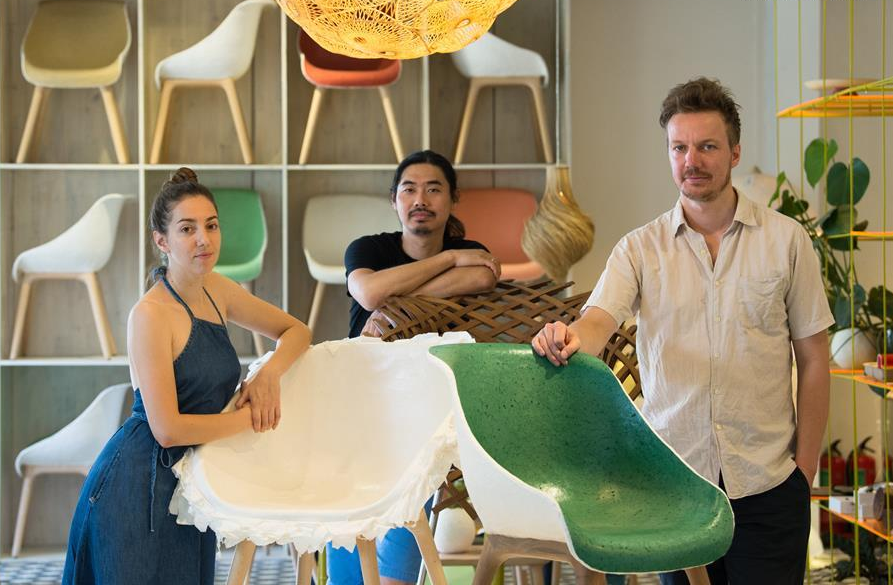
German designer Christoph John(R), Chinese designer Zhang Lei(C), and Serbian designer Jovana Zhang pose with their works, three chairs made of different materials, in Hangzhou, east China's Zhejiang Province, July 28, 2017. Christoph works for Pinwu, an interior design brand established in 2005. China's furniture industry is embracing a new wave of independent designer brands, especially in cities like Beijing, Shanghai and Hangzhou. The new generation of designers attaches more importance on the contemporary expression of Chinese elements, adding creative momentum to the furniture industry in China.
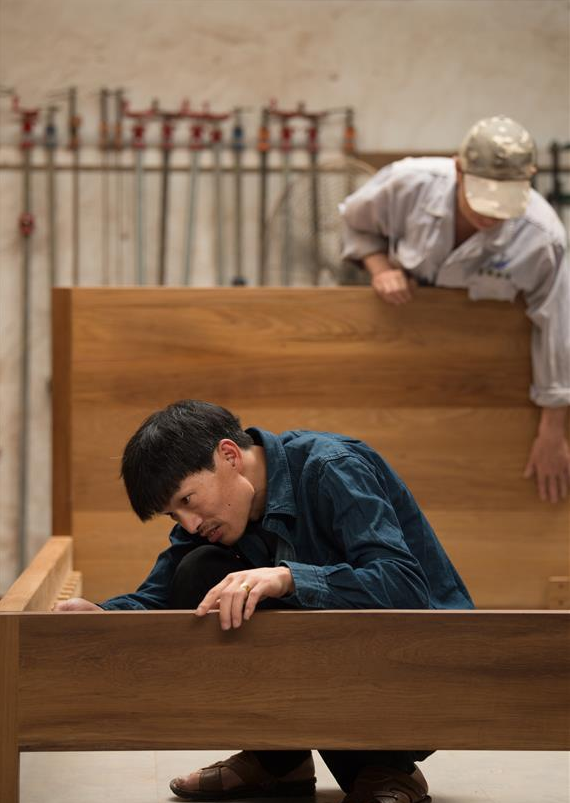
Carpenter Hu Bicheng (Front) works in his studio in Hangzhou, east China's Zhejiang Province, July 28, 2017. Hu Bicheng established his own brand "Hu Bicheng Wood" in 2011, acquiring inspiration from furniture in the 1950s and 1960s. China's furniture industry is embracing a new wave of independent designer brands, especially in cities like Beijing, Shanghai and Hangzhou. The new generation of designers attaches more importance on the contemporary expression of Chinese elements, adding creative momentum to the furniture industry in China.
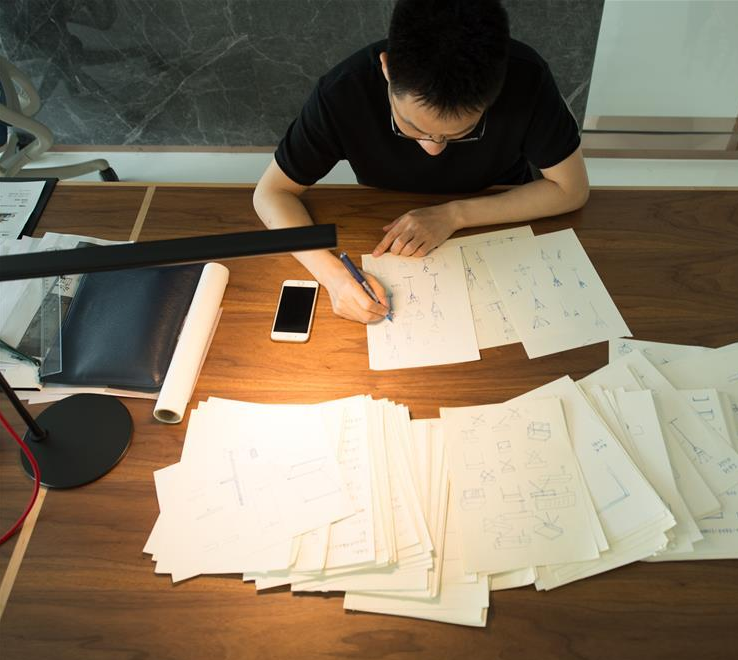
Zhao Lei draws new designs on paper at the headquarters of MZGF in Hangzhou, east China's Zhejiang Province, July 28, 2017. Zhao Lei established MZGF in 2010, dedicated to design a wide range of furniture suitable for contemporary life. China's furniture industry is embracing a new wave of independent designer brands, especially in cities like Beijing, Shanghai and Hangzhou. The new generation of designers attaches more importance on the contemporary expression of Chinese elements, adding creative momentum to the furniture industry in China.

Chen Weihua, desinger of "Hu Bicheng Wood" works on several new designs in Hangzhou, east China's Zhejiang Province, July 28, 2017. Carpenter Hu Bicheng established his own brand "Hu Bicheng Wood" in 2011, drawing inspiration from furniture in the 1950s and 1960s. China's furniture industry is embracing a new wave of independent designer brands, especially in cities like Beijing, Shanghai and Hangzhou. The new generation of designers attaches more importance on the contemporary expression of Chinese elements, adding creative momentum to the furniture industry in China.

Zhao Lei (R) and Zhang Jingxiang discuss the design of a chair in the headquarters of MZGF in Hangzhou, east China's Zhejiang Province, July 28, 2017. Zhao Lei established MZGF in 2010 and dedicated to design a wide range of furniture suitable for contemporary life. China's furniture industry is embracing a new wave of independent designer brands, especially in cities like Beijing, Shanghai and Hangzhou. The new generation of designers attaches more importance on the contemporary expression of Chinese elements, adding creative momentum to the furniture industry in China.
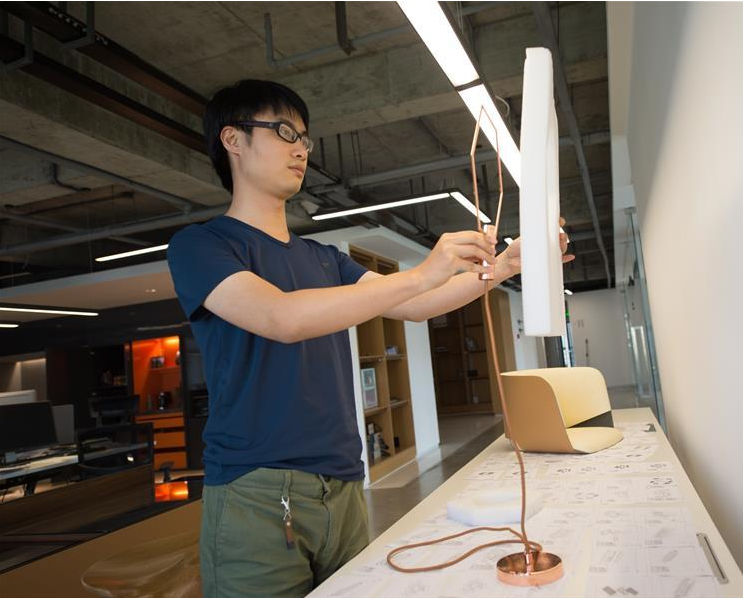
Zhang Jingxiang, chief desinger of MZGF, checks a new design in Hangzhou, east China's Zhejiang Province, July 28, 2017. Zhao Lei established MZGF in 2010, dedicated to design a wide range of furniture suitable for contemporary life. China's furniture industry is embracing a new wave of independent designer brands, especially in cities like Beijing, Shanghai and Hangzhou. The new generation of designers attaches more importance on the contemporary expression of Chinese elements, adding creative momentum to the furniture industry in China.
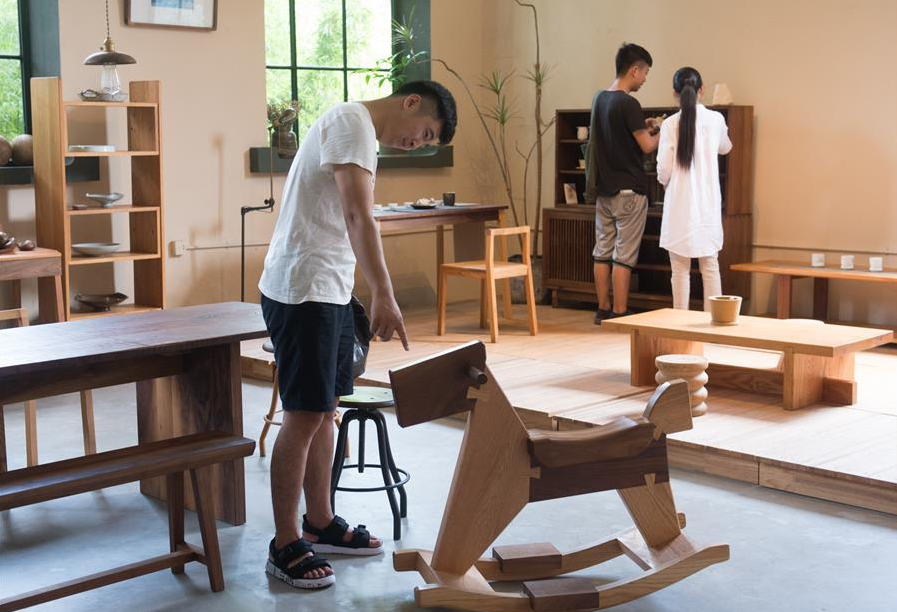
Customers visit the showroom of MUMO in Hangzhou, east China's Zhejiang Province, July 29, 2017. MUMO was established by Li Si'en in Wenzhou in 2011, producing eco-friendly furniture. China's furniture industry is embracing a new wave of independent designer brands, especially in cities like Beijing, Shanghai and Hangzhou. The new generation of designers attaches more importance on the contemporary expression of Chinese elements, adding creative momentum to the furniture industry in China.
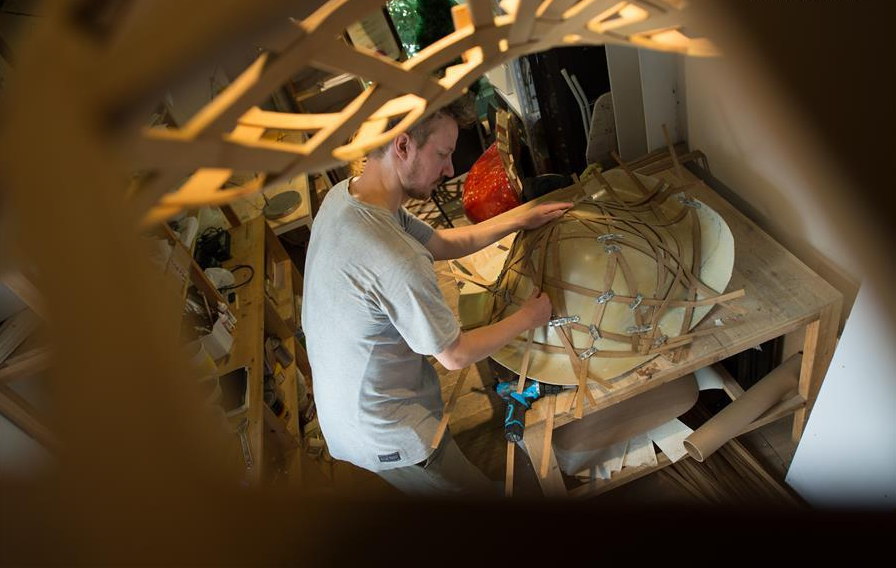
German designer Christoph John makes a bamboo chair in his workshop in Hangzhou, east China's Zhejiang Province, July 28, 2017. Christoph works for Pinwu, an interior design brand established in 2005. China's furniture industry is embracing a new wave of independent designer brands, especially in cities like Beijing, Shanghai and Hangzhou. The new generation of designers attaches more importance on the contemporary expression of Chinese elements, adding creative momentum to the furniture industry in China.
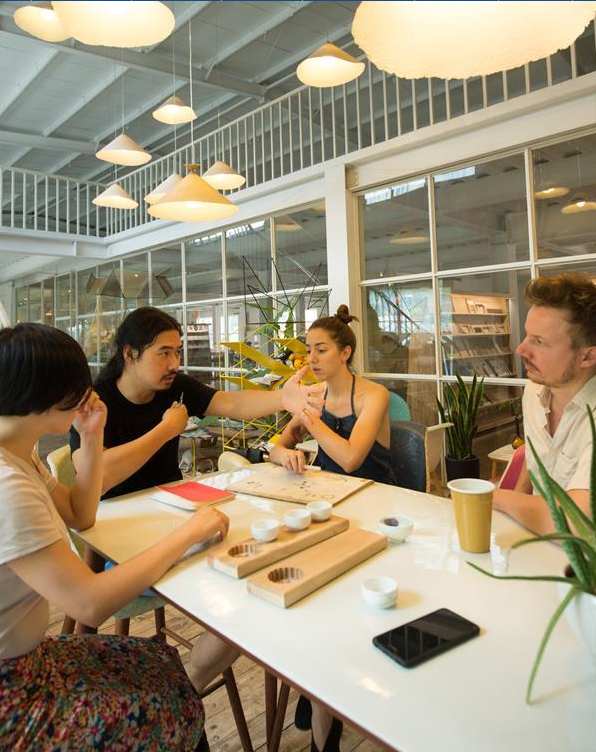
Staff of Pinwu, an interior design brand established in 2005, discuss a new project in Hangzhou, east China's Zhejiang Province, July 28, 2017. China's furniture industry is embracing a new wave of independent designer brands, especially in cities like Beijing, Shanghai and Hangzhou. The new generation of designers attaches more importance on the contemporary expression of Chinese elements, adding creative momentum to the furniture industry in China.
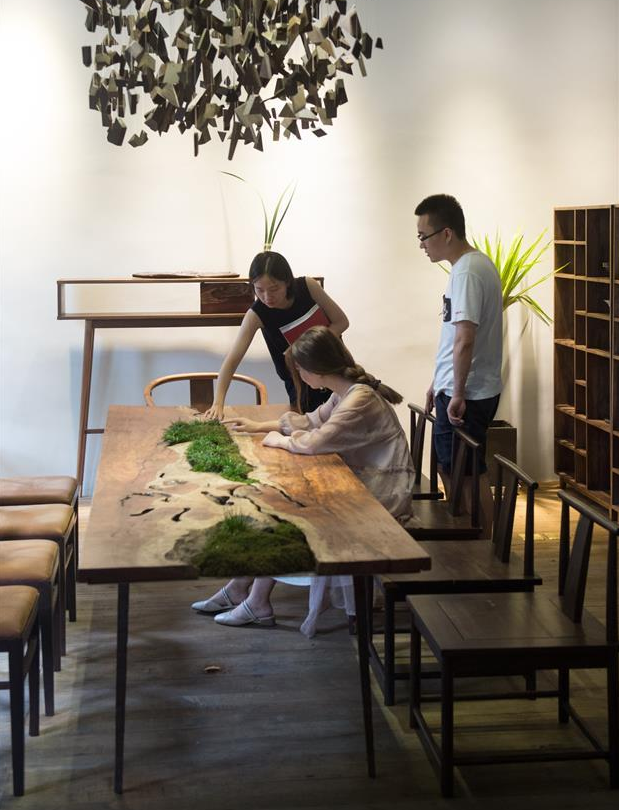
Customers visit the showroom of YM1978 in Hangzhou, east China's Zhejiang Province, July 29, 2017. The brand was established by a father with his daughter in 2009, using cracked or defective wood as material for its furniture. China's furniture industry is embracing a new wave of independent designer brands, especially in cities like Beijing, Shanghai and Hangzhou. The new generation of designers attaches more importance on the contemporary expression of Chinese elements, adding creative momentum to the furniture industry in China.
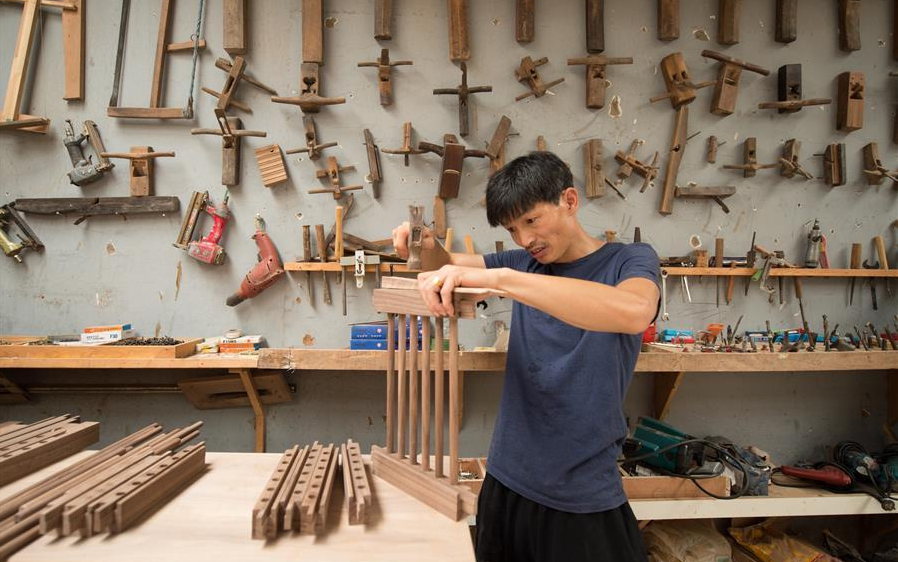
Carpenter Hu Bicheng works in his studio in Hangzhou, east China's Zhejiang Province, July 28, 2017. Hu Bicheng established his own brand "Hu Bicheng Wood" in 2011, acquiring inspiration from furniture in the 1950s and 1960s. China's furniture industry is embracing a new wave of independent designer brands, especially in cities like Beijing, Shanghai and Hangzhou. The new generation of designers attaches more importance on the contemporary expression of Chinese elements, adding creative momentum to the furniture industry in China.
(Source: xinhuanet.com)
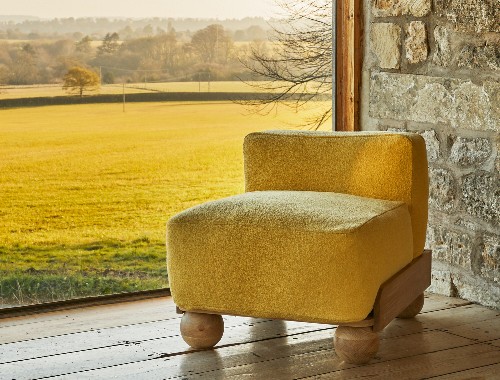
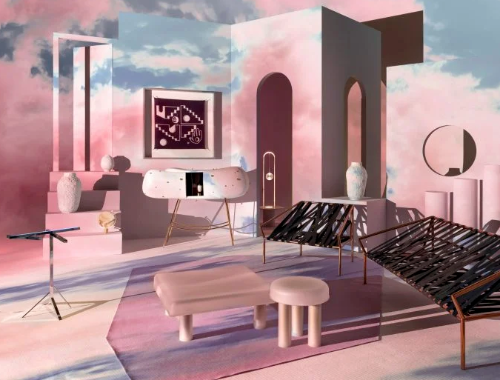
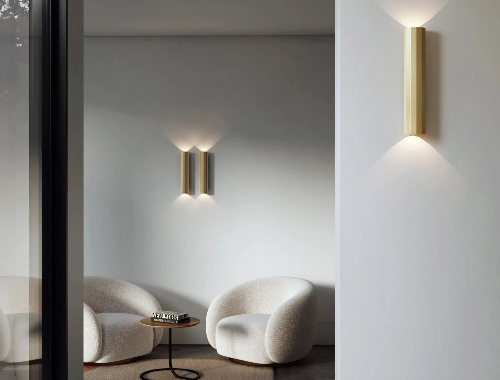


 沪公网安备31010402003309号
沪公网安备31010402003309号



